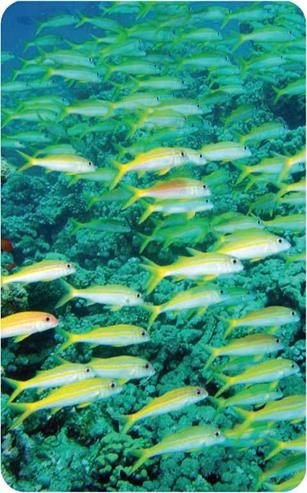How an Airplane’s Wing Creates Lift
The shape of a wing, curved on top and flatter underneath, is called an airfoil. When it slices through air, some of the air rises up over the curved top of the wing and down the other side.
The air that travels over the top of the wing speeds up and, according to a scientific law known as Bernoulli’s Principle, the pressure above the wing falls. In addition, air flowing over the wing is directed downward by the wing’s shape. According to another scientific law, Newton’s third law of motion, this downward motion of the air results in an upward motion of the wing. The force that pushes a wing upward is lift. If a wing is tilted up at the front, air is deflected downward even more powerfully by the curved top and also by the angled bottom of the wing. This produces more lift.
Types of Drag
For a plane flying slower than the speed of sound, there are three main types of drag. They are induced drag, form drag, and skin friction drag. Induced drag is also known as lift-induced drag. It happens when wings produce lift, and it is increased at low speeds.
Form drag depends on the size and shape of an aircraft. It increases as an airplane flies faster. This kind of drag can be reduced by making a plane slender and streamlined. A streamlined
shape is one that lets air flow around it smoothly and easily.
Skin friction drag depends on how smooth the surface of an aircraft is. It is greater at high speeds. Designers can reduce skin friction drag by making an aircraft as smooth as possible. Form drag and skin friction drag added together are sometimes called parasitic drag, or parasite drag.
With induced drag increasing at low speeds and parasitic drag increasing at high speeds, there is a speed in the middle at which both types of drag are lower; the total drag, in other words, is the lowest it can be. An aircraft’s L/D number is highest at this speed, and its wings are working most efficiently. When designers produce a new airplane, they try to ensure that its cruising speed is the same as this minimum drag speed. The cruising speed is the speed at which
|
О Fish are streamlined so they can move efficiently through water with minimum drag, just as streamlined aircraft do through the air. |
a plane usually flies, so aircraft designers want its wings to be most efficient at this speed.
Aircraft that fly faster than the speed of sound suffer from additional types of drag: wave drag and ram drag. Wave drag happens because high-pressure waves called shock waves form in the air around the airplane and slow it down. Ram drag is caused by air being slowed down as it enters the plane’s engines.











